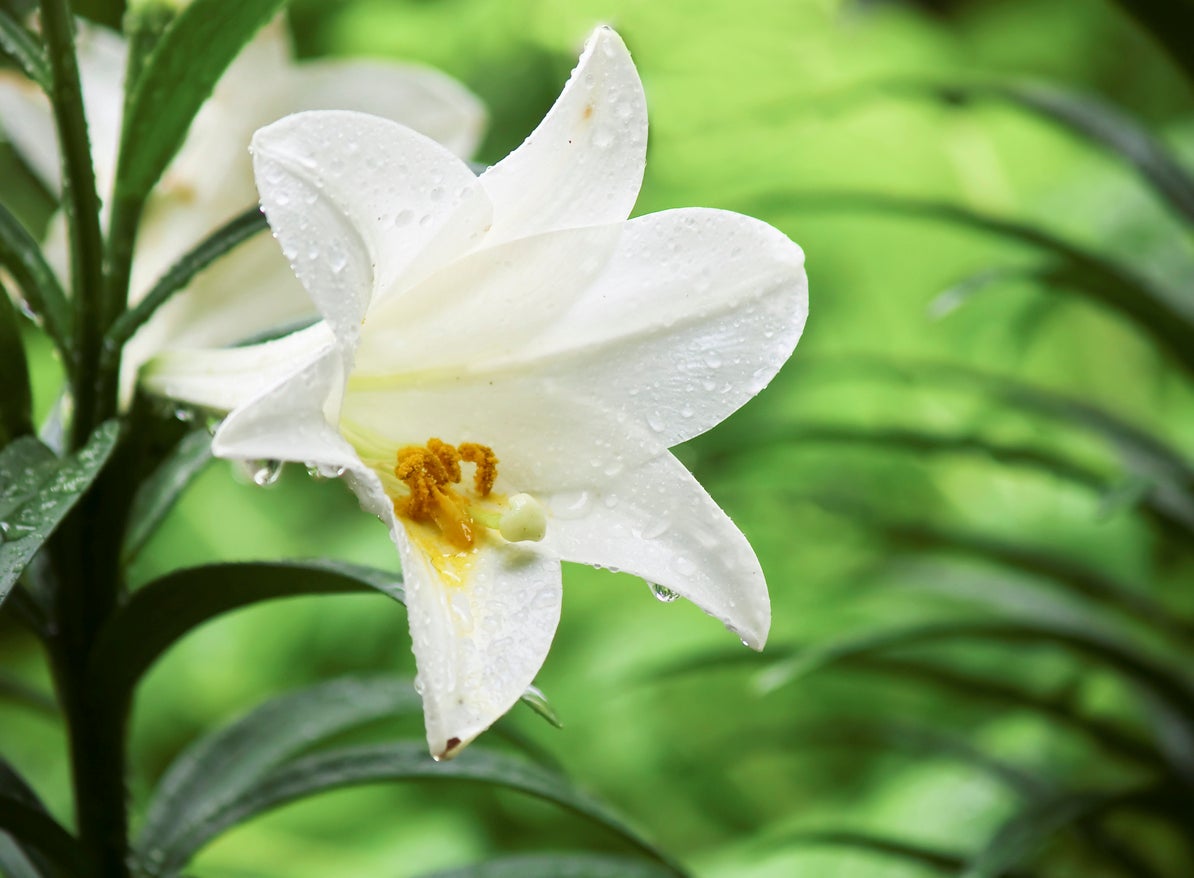Caring For Easter Lilies: How To Plant Easter Lily After Blooming


Easter lilies (Lilium longiflorum) are traditional symbols of hope and purity during the Easter holiday season. Purchased as potted plants, they make welcome gifts and attractive holiday decorations. The plants last only a few weeks indoors, but planting Easter lilies outside after the blossoms fade lets you continue to enjoy the plant long after the holiday season. Let's learn more about planting and caring for Easter lilies outside.
How to Plant Easter Lily After Blooming
Caring for Easter lilies properly while you have them indoors ensures a strong, vigorous plant that makes the transition to the garden much easier. Place the plant near a bright window, just out of reach of the direct rays of the sun. Cool temperatures between 65 and 75 degrees F. (18-24 C.) are best for growing Easter lily plants. Water the plant often enough to keep the soil lightly moist and use a liquid houseplant fertilizer every two weeks. As each blossom fades, clip out the flower stem near the base. Once all of the blossoms fade it's time to transplant Easter lilies outdoors. The plants thrive in any type of soil except heavy clay. Amend soils that drain slowly with a generous amount of compost or peat moss. Choose a location with full or morning sun and afternoon shade. When choosing a location for planting Easter lilies outside, keep in mind that an Easter lily plant can grow 3 feet (1 m.) tall or a little more. Dig the planting hole wide enough to spread the roots and deep enough that once the plant is in place, you can cover the bulb with 3 inches (8 cm.) of soil. Set the plant in the hole and fill in around the roots and bulb with soil. Press with your hands to squeeze out air pockets and then water slowly and deeply. If the soil settles and leaves a depression around the plant, add more soil. Space Easter lilies 12 to 18 inches (31-46 cm.) apart. Here are a few Easter lily care and planting tips to help you get your plants off to a good start:
- Easter lilies like to have the soil around their roots shaded. You can accomplish this by mulching the plant or by growing shallow-rooted annuals and perennials around the lily to shade the soil.
- When the plant begins to die back naturally in fall, cut the foliage back to 3 inches (8 cm.) above the soil.
- Mulch heavily in winter with an organic mulch to protect the bulb from freezing temperatures.
- When new shoots emerge in spring, feed the plant with a complete fertilizer. Work it into the soil around the plant, keeping it about 2 inches (5 cm.) from the stems.
Can You Plant Easter Lilies Outside in Containers?
If you live in a USDA plant hardiness zone colder than 7, growing Easter lily plants in containers makes it easier to bring them inside for winter protection. Container growing is also a good option for gardeners with heavy clay or poorly drained soil. Bring the plant indoors when the foliage yellows at the end of the season. Store it in a dimly lit, frost-free location.
Gardening tips, videos, info and more delivered right to your inbox!
Sign up for the Gardening Know How newsletter today and receive a free copy of our e-book "How to Grow Delicious Tomatoes".

Jackie Carroll has written over 500 articles for Gardening Know How on a wide range of topics.
-
 Looking For Plants To Give You The Soft And Fuzzies? Try These 5 Fuzzy Leaf Plant Options
Looking For Plants To Give You The Soft And Fuzzies? Try These 5 Fuzzy Leaf Plant OptionsLovers of texture, drama, silver foliage and tactile plants will adore these special sensory garden additions. These fuzzy leaf plant options will leave you all aglow
By Susan Albert
-
 Get Ready For A Summer Of Hummers! Grow These Full Sun Hummingbird Plants and Flowers
Get Ready For A Summer Of Hummers! Grow These Full Sun Hummingbird Plants and FlowersIf you’re lucky enough to enjoy a sunny backyard, make sure you are maxing out on your pollinator opportunities and grow these full sun hummingbird plants and flowers
By Tonya Barnett